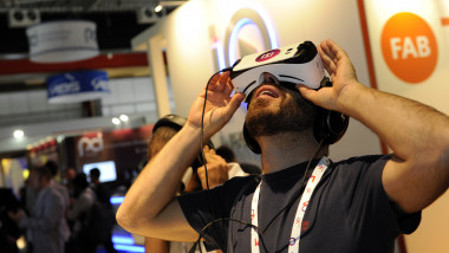Pandora keeps mobile TV loudness on the level
While it's easy to look at the video signal and various requirements in delivering mobile TV, the audio signal is just as important, if not more so. The reason is audio can fluctuate dramatically on different programs, networks and channels. Changes can occur from content to commercials and even commercial to commercial. An inconvenience on standard TV, on a mobile device its implications are, well, amplified. Through the use of earbuds, headsets, Bluetooth as well as through a mobile device speaker, variations in audio can be more pronounced. So it is no surprise that different nations are beginning to regulate audio levels, coming up with standards for audio transmission that carriers must adhere to.
Pandora from Wohler sets out to solve this dilemma. It's a portable loudness analyzer that monitors up to eight channels of audio embedded in 3G/HD/SD-SDI as well as discrete AES signals. It ensures your content is EBU R128, ITU-1770 and -1771 compliant. The unit comes in a desktop or rack-mounted version, offers an LCD touchscreen interface, can work in studio or mobile, and tracks loudness over time via an on-screen histogram. One benefit is one unit can monitor up to eight feeds at once, so one or several units should take care of most of the needs of mobile TV services. Pandora provides a clear, accurate reading of loudness measurements from an SDI stream or discrete AES inputs. The system uses an iPod touch with a free app that can be downloaded from Apple's iTunes App Store.
"2011 does seem to be the year of loudness," says Jeff McNall, Wohler's product line manager for audio and video products, "Much of this is due to standards being created by the ITU1770/1771 standard [USA] and EBU R128 [Europe and rest of world]. Content providers are taking this very seriously and are facing deadlines to confirm to mandated regulations. We were looking for a solution that was very easy to use and provided affordable loudness analysis, so that is how Pandora came about."
The iPod app was the final element that brought the unit to a new level of user-friendliness. "We chose the iPod touch as it has a simple, easy-to-navigate user interface. By providing the app in the app store, this allows potential users to try the application on their own Apple device as well as provide a 24/7 mechanism for loading the latest versions."
Pandora's development was focused from the start on supporting current hardware, being updatable via the app and meeting the challenges of level correction and compensation. "By offering both AES and SDI inputs, this provides real-world digital interfaces to what content providers are using to move signals around their workflow" McNall says. "In addition, providing multiple setting and configuration screens within the same device further sets Pandora apart from the competition. The big challenge is maintaining audio levels within the workflow from start to end-user. Many things can happen to the audio content as it passed from one point to another. We expect the very last points in the workflow to be the most challenging, as these can be out of the content originators' hands"
Pandora does benefit from being able to remotely change parameters via an app, providing extra flexibility and unique monitoring for technicians. As the move to regulate audio on a global basis moves forward, we're sure to see more systems like this in the near future.
The professional video industry's #1 source for news, trends and product and tech information. Sign up below.
